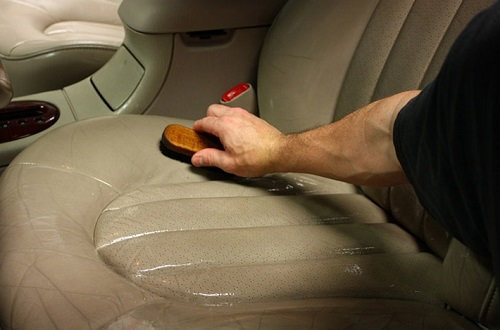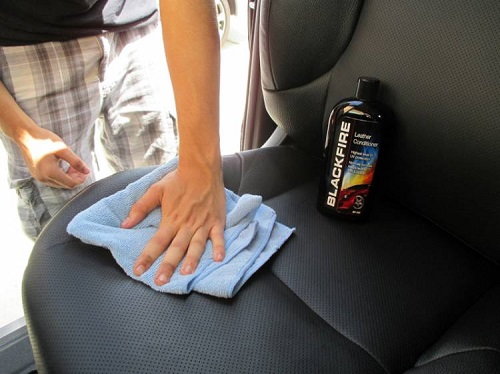Acura: How to Clean/Condition Leather Seats
Having leather seats in your Acura can be a nice enhancement, but they need to be maintained in order to sustain their quality and overall value. Here are some best recommended steps to take when cleaning your seats.
This article applies to all Acura models (2000-Present).
Leather seats in an Acura look great, but only if they’re well maintained. Leather seats that are not cared for can get messy looking real fast. Poor upkeep can lead to staining, cracking, and even tearing of the material. Taking care of these seats is actually a fairly simple process—one that takes just a few minutes, but something that lasts a long time.

Materials Needed
- Leather cleaning agent
- Leather conditioning agent
- Microfiber towels
- Soft-bristled brush
- Sponge
- Vacuum
Step 1 – Vacuum and wipe
Begin by vacuuming your seats to get any of the obvious dirt and grime off of it. Take care not to scratch the seats with the nozzle. Finish by spraying a microfiber towel with cleaner, and wipe the seats down. Do slow, even wipes with a leather cleaner, saddle soap, or another form of mild leather soap.

Step 2 – Brush the seats
Using a soft-bristled brush, gently scrub the leather with the cleaner on it; this will agitate any remaining dirt and bring it to the surface. Then wipe dry with a microfiber cloth.

Step 3 – Dry the seats
Use a new, clean, and dry microfiber cloth towel to wipe the cleaning agent off the seats. There should be dirt, oil, and grime on this towel. Again, slow, even wipes.

Step 4 – Condition the seats
Choose a quality, water-based, pH-neutral condition that doesn’t have petroleum distillates, silicone, or waxes in it. Choose an inconspicuous area and apply a little bit of the condition—gently rub it in with a microfiber cloth and check that it does not discolor the leather.
If the conditioner is good to go, apply it to the seats and use a microfiber cloth or sponge to rub it into the leather. Do not apply in excess–this will make the seats greasy/slick. When finished, park the car in a shadowy area, or inside a garage, overnight to allow conditioner to dry—most conditioner needs at least one hour to dry.
When curing is complete, use a microfiber cloth to buff the seats.

Related Discussions and Site
- Best Way Clean Condition Leather Seats - AcuraZine.com
- How Clean Stains Off My Leather Seats - AcuraZine.com
- How Do you Care Your Leather Seats - AcuraZine.com
- Acura TL Perforated Seats Maintenance - AcuraZine.com
- Clean Leather Car Seats - WikiHow.com






